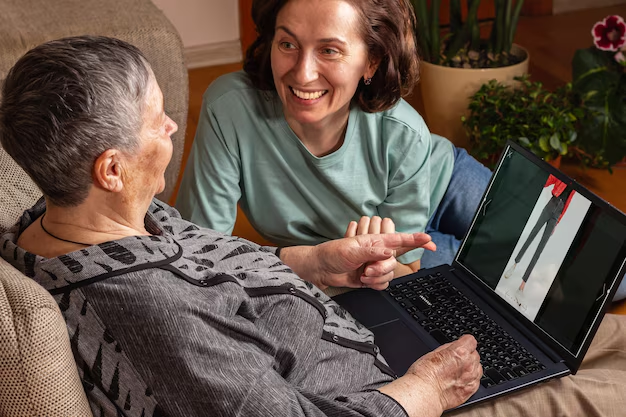Mastering Effective Communication with Doctors as a Caregiver
Being a caregiver is no small feat. It requires dedication, patience, and a deep sense of empathy. Among the many responsibilities, communicating effectively with healthcare professionals stands out as paramount. After all, clear communication can significantly impact the quality of care that your loved one receives. But how can caregivers streamline this process and ensure they're effectively advocating for someone else's health? Let's explore this intricate dance of interaction with actionable insights and tips that empower you to bridge any communication gaps.
Understanding Your Role as a Caregiver
Before diving into strategies, it's crucial to clarify the role of a caregiver in the healthcare setting. Caregivers are often the primary liaison between the patient and medical professionals. This involves understanding the loved one's medical history, current medication, and concerns to relay accurate information during consultations.
Navigating Complex Emotions
Being a caregiver is emotionally taxing. Balancing personal emotions while advocating for another can be challenging. Yet, this dual-role is a testament to one's resilience. Understanding personal emotions and recognizing their influence on communication can help caregivers maintain clarity and composure during medical discussions.
The Foundation of Effective Communication
Prepare in Advance
Preparation is your best tool. Ahead of any doctor's appointment, gather essential documents such as medical history, current medication lists, and insurance information. Create a list of questions or concerns to address during the visit. This proactive step ensures a comprehensive and focused discussion when time is often limited.
Listen Actively
Once with the healthcare provider, active listening becomes crucial. This means fully focusing on what the doctor says, understanding the information, and responding thoughtfully. Avoid distractions, take notes if necessary, and clarify any uncertainties by asking questions, even if they seem basic.
Ask the Right Questions
Don’t hesitate to ask direct and specific questions. Here are a few categories to consider:
- Diagnosis: What is the condition diagnosed? Are there alternative names or related conditions?
- Treatment Options: What are all available treatment options? Are there non-medical approaches worth considering alongside traditional methods?
- Side Effects: What side effects should be expected from prescribed treatments?
Illustrative Example: The SOFTEN Method
Engaging with medical professionals can be intimidating. The SOFTEN method—a strategy practiced by many to enhance communication—is beneficial here.
- S: Smile - Helps set a positive tone.
- O: Open posture - Conveys attentiveness and receptiveness.
- F: Forward lean - Shows engagement and interest in the conversation.
- T: Touch - A gentle tap or handshake can convey empathy (use with discernment and respect for personal space).
- E: Eye contact - Maintains a connection and demonstrates sincerity.
- N: Nod - Indicates understanding and encourages the speaker to continue.
Ensuring Understanding and Documentation
Summarize and Verify
After the healthcare provider explains a diagnosis or treatment, summarize what you’ve heard in your own words. This process confirms understanding and provides an opportunity for the doctor to correct any misunderstandings.
Document Everything
Keeping detailed records of all medical appointments, treatments, and discussions is invaluable. Note down important points during consultations and ensure that you have copies of any medical reports. This documentation becomes a reference tool for future appointments and decisions.
Navigating Common Barriers
Language and Cultural Barriers
Communication challenges can arise from language differences or cultural misunderstandings. Request an interpreter if language barriers exist—most healthcare facilities provide this service. Similarly, respect and familiarity with cultural perspectives can enhance interaction with healthcare providers.
Time Constraints and Information Overload
Appointments are often limited in time. Prioritizing concerns ensures that critical issues are addressed. If overwhelmed with information, ask the doctor to focus on key takeaways or provide written summaries for clarity.
Handling Disagreements and Misunderstandings
Disagreements can occur, and feeling heard is vital. If you disagree with a healthcare provider, remain respectful and express your concerns. Seek a second opinion if necessary but strive to maintain a collaborative partnership aimed at the patient’s well-being.
Building a Collaborative Relationship
Establish Trust and Rapport
Cultivating a positive relationship with medical staff can transform the caregiving experience. Show appreciation for their efforts and communicate openly. A foundation of mutual respect leads to better cooperation and understanding.
Be an Advocate, Not an Adversary
Rather than approaching conversations with defensive energy, frame interactions as a partnership focused on the patient's best interest. Involve the patient’s input where possible, respecting their autonomy and preferences.
Summary Tips for Caregivers 📝
- Prepare ahead: Gather documents and list questions for appointments.
- Practice active listening: Stay focused and clarify uncertainties.
- Document discussions: Maintain detailed records of medical interactions.
- Use the SOFTEN method: Engage better using body language and empathy.
- Address barriers: Utilize interpreters and respect cultural differences.
- Build rapport: Show appreciation and communicate honestly with healthcare staff.
Conclusion: A Journey of Collaboration
Communicating with doctors as a caregiver requires a blend of preparation, empathy, and adaptability. By honing these skills, caregivers enhance their ability to support loved ones through complex healthcare landscapes. Embracing this journey as a partnership rather than a hurdle not only improves care outcomes but also enriches the caregiver’s experience. Through understanding and practice, effective communication with healthcare providers becomes a powerful tool for advocacy and support.

Related Topics
- Caregiver Support For Long-Distance Caregivers
- Caregiving Support Resources For Families
- Caregiving Tips For Seniors With Dementia
- Financial Assistance For Family Caregivers
- How To Balance Caregiving With Your Own Life
- How To Become a Caregiver For a Senior
- How To Create a Care Plan For Seniors
- How To Create a Safe Home For Seniors
- How To Handle Caregiver Burnout
- How To Help a Senior Transition To In-Home Care